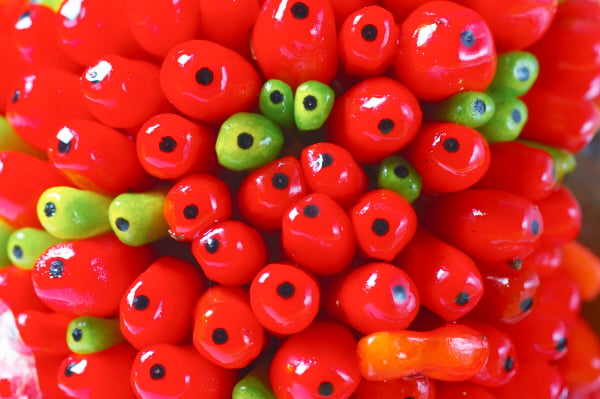Arisaema consanguineum
Himalayan cobra lily
A tall, tuberous perennial producing a single, umbrella-shaped leaf with 11-20 leaflets 20cm or more in length, on a stem up to a metre high. Below this, in summer, is the dark, purple-brown hooded spathe marked with fine green and white stripes.

Buy this plant
Size
Ultimate height
0.5–1 metresTime to ultimate height
2–5 yearsUltimate spread
0.1–0.5 metresGrowing conditions
Moisture
Moist but well–drainedpH
Acid, NeutralColour & scent
| Stem | Flower | Foliage | Fruit | |
| Spring | ||||
|---|---|---|---|---|
| Summer | Brown Green White | Green | ||
| Autumn | ||||
| Winter |
Position
- Partial shade
Aspect
South–facing or North–facing or West–facing or East–facing
Exposure
Sheltered Hardiness
H3Botanical details
- Family
- Araceae
- Native to GB / Ireland
- No
- Foliage
- Deciduous
- Habit
- Columnar upright
- Potentially harmful
- Humans/Pets: Harmful if eaten, skin/eye irritant. Wear gloves and other protective equipment when handling For further information and contact numbers regarding pets, see the HTA guide to potentially harmful plants
- Genus
Arisaema are mostly tuberous perennials usually with palmately lobed leaves, and distinctive tubular, hooded spathes within which the tiny true flowers are clustered at the base of the club-like or filamentous spadix, followed by a spike of red berries
- Name status
Correct
- Plant range
- Himalaya to SE Asia
How to grow
Cultivation
Grow in moist but well-drained, humus-rich soil in a cool site. Tubers must not dry out when dormant, and may need winter protection in colder areas
Propagation
Propagate by seed, sowing them in containers in a cold frame in autumn or spring, or remove offsets in late summer
Suggested planting locations and garden types
- Architectural
- City and courtyard gardens
- Cottage and informal garden
- Flower borders and beds
Pruning
No pruning required
Pests
May be susceptible to slugs and vine weevil
Diseases
Generally disease-free
Get involved
The Royal Horticultural Society is the UK’s leading gardening charity. We aim to enrich everyone’s life through plants, and make the UK a greener and more beautiful place.